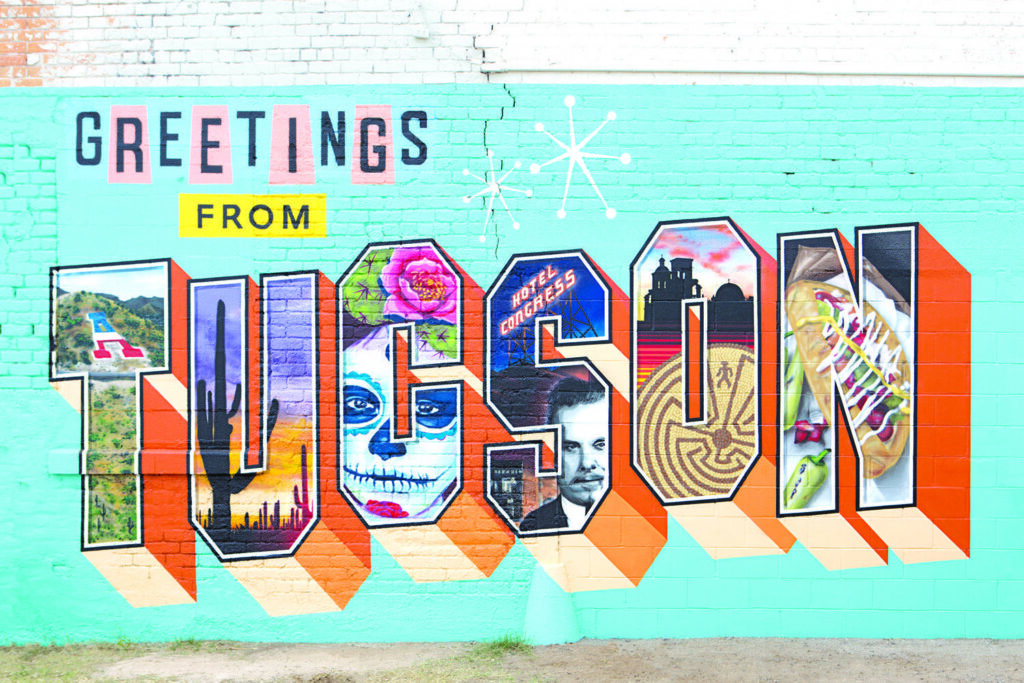
In a private backyard adorned with candles and decorative lights, an older Mexican man with a shock of silver hair plays guitar and sings emotionally stirring songs to an intimate audience of family, friends and fans. In a crowded jazz club located inside a historic (some say haunted) hotel with a colorful past, a jazz ensemble firing on all cylinders summons the ghosts of the genre’s heyday while also forging new paths. On the patio of a hip bar near a college campus, a married couple and their dear friend bash out heartfelt rock & roll anthems laced with searing guitar licks and soaring vocals. On the stage of a historic concert hall, an energetic ensemble led by a duo of young, yet seasoned locals crafts an intoxicating blend of musical styles. These are just a few snapshots of Tucson, Arizona’s music scene, an unexpectedly fertile and almost embarrassingly rich hotbed of talent nurtured by this dusty desert city.
Located about an hour’s drive from the US-Mexican border, Tucson (colloquially referred to as the Old Pueblo) is often overshadowed by Phoenix, its much larger neighbor to the north. Nationally touring bands frequently skip Tucson in favor of the more lucrative Phoenix market. Yet, while Phoenix’s endless urban sprawl can seem faceless and uninviting, Tucson has developed a unique personality, flavored by its rich history of indigenous culture, its proximity to Mexico, its dramatic landscape, its thriving university and a multitude of part-time and full-time residents who were drawn here from around the globe by the warm climate and the mystique of the Sonoran Desert. It’s a city of more than a half million people that, at times, feels like a small town. In addition to its world-renowned culinary scene (one of only two American cities designated as a “City of Gastronomy” by UNESCO) and a healthy community of visual artists and craftspeople, Tucson has a music culture that would be the envy of a city many times its size. My wife and I moved here about three years ago from Portland, Oregon, another city with a thriving music scene, but somehow the environment here seems so much more varied and approachable. You can literally go out every night of the week (and believe me, I’ve tried) and see at least three or four musical acts around town, usually for the price of a drink and a tip for the band. (Always tip the band.) Audiences are usually enthusiastic, attentive and appreciative – people here show up for the arts. It would be impossible to cover all the city’s many world-class musical acts in just one article; here are just a few.
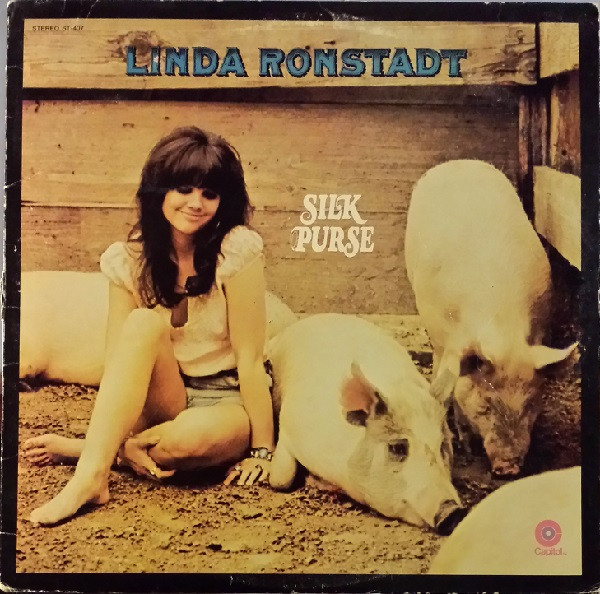
Beginnings: Linda Ronstadt
Stepping back in time for just a moment, perhaps the best-known and most popular musician to emerge from Tucson is Linda Ronstadt, the multimillion-selling singer-songwriter who delivered chart-topping hit after hit throughout the 1970s and 1980s, including “You’re No Good,” It’s So Easy” and “Blue Bayou.” Any discussion of the local music scene would be incomplete without taking note of her groundbreaking career. Ronstadt was born in Tucson to a father of Mexican and German descent and a mother of mixed European descent. In many ways, her heritage is emblematic of Tucson’s vibrant blend of cultures. Ronstadt necessarily relocated to Los Angeles early on in her career, but her musical upbringing and the influence of her early years in Tucson was always present in her art. In the late 1980s, she released her first album in Spanish, entitled Canciones de Mi Padre (“Songs of my Father”), consisting of songs originating from the Mexican state of Sonora, which shares a border and many cultural elements with southern Arizona. Tragically, Ronstadt was robbed of her ability to sing in recent years by a neurodegenerative condition. Even so, she’s still somewhat active in public life and her renown looms large over Tucson in a myriad of ways, including having a prominent music venue named after her. There are also quite a few of her family members who are musicians themselves and often perform around town, keeping the family name active. If there were such a thing as Tucson music royalty, it would almost certainly be the Ronstadt clan.
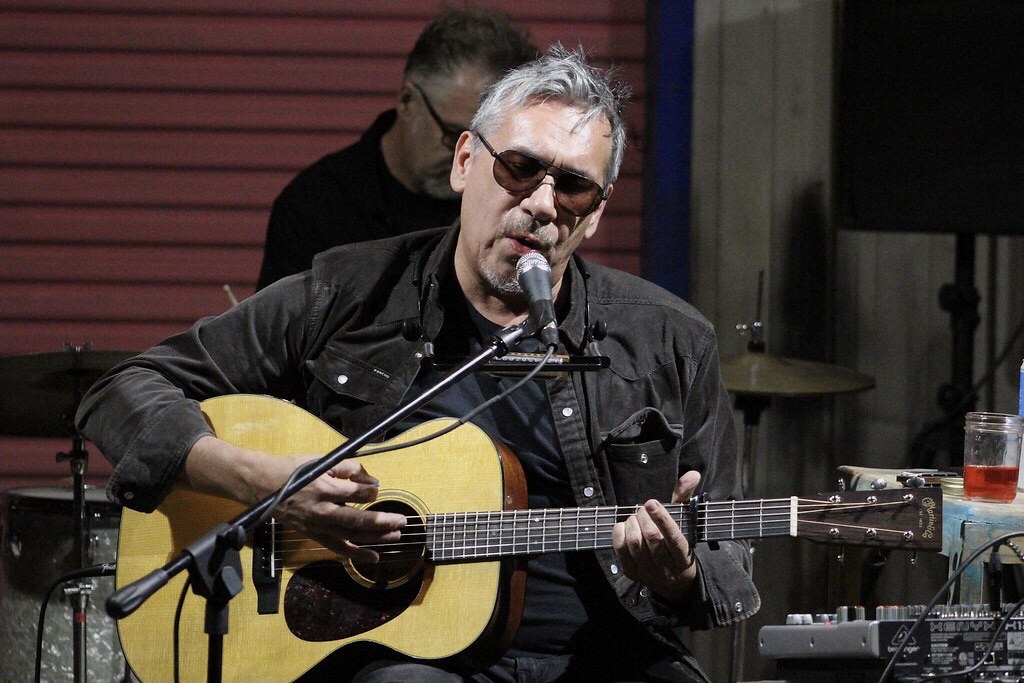
Decades of Esteem: Joe Peña
One of Tucson’s most venerable singer-songwriters, Joe Peña has been kicking around the city’s music scene for decades, both as a solo artist and as the leader of the band Greyhound Soul. A Texas native, he ended up in Tucson at a relatively young age and began performing behind the drumkit with a number of bands. He went on to form Greyhound Soul in the 1990s and the band has been around ever since, albeit in different permutations (with the one constant member other than Peña being bass player Duane Hollis, a seasoned pro himself). Peña has a real authenticity and grit in his voice that can’t be faked. When he performs solo, with just an acoustic guitar, his music takes on a more introspective, often somber aspect. He also performs frequently with fellow Tucsonan Joe Novelli, who joins in with a lap guitar and assorted electronics to add some additional texture. His band Greyhound Soul sometimes plays as a trio, but when Peña and the full band (which can be up to six members) take the stage, the music transforms even more, and the same song can deliver a significantly different impact. I recently saw them at their 30th Anniversary performance, and my perception was that of a band with the bluesy swagger and instrumental chops of early 70s Stones combined with the focused attack of a 90s grunge band. It was a memorable experience and a really special celebration of their longevity.
Cool Jazz in a Hot City: Arthur Vint & The Century Room
New York City’s legendary jazz club, the Village Vanguard, is known as a mecca for jazz lovers, having played host to an endless parade of the genre’s greats over the years. Tucson-born drummer, Arthur Vint, moved to New York and fortuitously ended up working at the Vanguard, all the while soaking up its history and ambience. Upon returning to Tucson, he collaborated with the historic Hotel Congress (where John Dillinger’s notorious gang of outlaws famously stayed in the 1930s) to transform a little-used corner of the hotel into a club modeled after the Vanguard that would bring world-class jazz to Tucson. Since its grand opening in 2022, the Century Room has exceeded all expectations by becoming a cornerstone of the local music scene and attracting a wealth of talent from all over, particularly during the annual Tucson Jazz Festival. Some of the Festival’s internationally famous headlining stars have been known to sit in on late-night sessions at the club, and it’s a treat for those patrons who are lucky enough to be in attendance to see these artists in such an intimate setting. In addition to managing The Century Room, Vint can be found behind the drum kit several nights a week, whether with his own ensemble, Arthur Vint and Associates (a play on the name of his father’s prominent local architectural firm), or backing up an out-of-town artist.
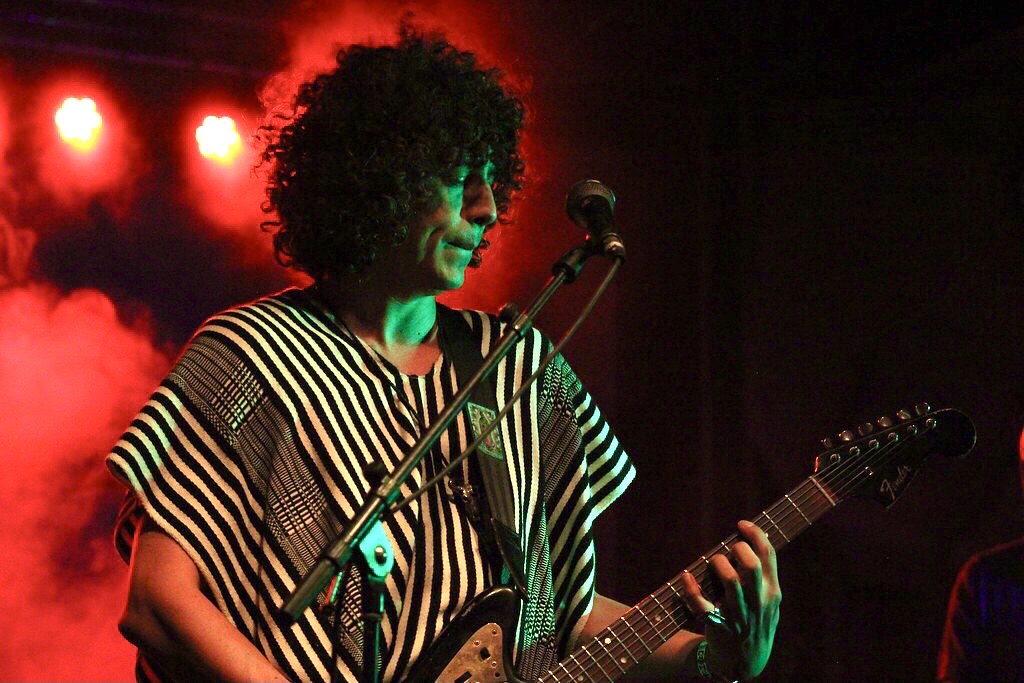
Connections: Brian Lopez, Howe Gelb and Gabriel Sullivan
Part of what makes Tucson’s music scene so special is how endlessly interconnected the musicians are. Folks here will consistently play in two, three, four bands or more, and you get used to seeing the same people in different permutations night after night. A great example of this is the trio of Brian Lopez, Gabriel Sullivan and Howe Gelb. (Pay attention – there are a lot of ins, a lot of outs and a lot of what-have-yous here.) Lopez and Sullivan are Tucson natives, both of whom have successful solo careers; Lopez leans toward an introspective, psychedelic indie rock/pop sound informed by his Latin heritage, while Sullivan is more of a contemplative, dark troubadour, somewhat reminiscent to me of a Sonoran Desert version of Leonard Cohen. Sullivan also runs Dust and Stone Recording Studio, a place where many local artists have committed their sounds to tape (so to speak). Together, Lopez and Sullivan also lead Xixa, a powerhouse of a band that blends cumbia (a unique style of Latin American popular music) with gothic overtones and hints of spaghetti western soundtracks to create a dynamic, percussive sound that seems to encapsulate this region perfectly. Howe Gelb, on the other hand, was not born in Tucson, but like many other artists, he found his way here early on and made it his home. Gelb formed the alternative punk/country ensemble Giant Sand in the 1980s; they went on to become a beloved staple of the burgeoning indie rock scene. Included in the roster of Giant Sand over its decades of existence were – wait for it – Brian Lopez and Gabriel Sullivan. To add to the circularity, some other former members of Giant Sand were John Convertino and Joey Burns, who went on to form the well-known band Calexico; Brian Lopez has also been an on-again, off-again member of that band and has performed with them as recently as March of this year at a political rally. Lopez recently formed Bolero Jonze, a side project featuring Ryan Alfred, also formerly of Calexico, on the upright bass. Finally, Giant Sand’s first album featured Winston Watson on drums, and he currently sits behind the drumkit in Sullivan and Lopez’s band Xixa! (Side note: Watson once played drums with some guy named Bob Dylan, who’s clearly not part of the Tucson scene.) There are likely more connections I’m missing, but the point is, it’s basically one big happy family here.
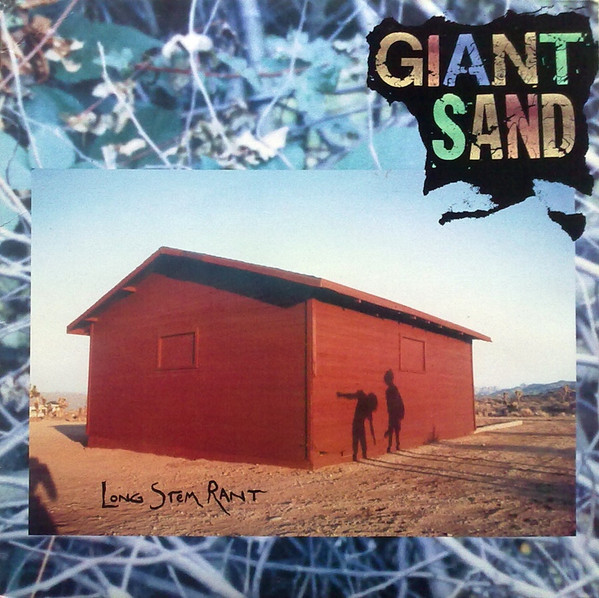
Punk Roots: Kid Congo Powers
Tucson is currently the home of a veritable legend in the punk rock scene; namely, Kid Congo Powers (née Brian Tristan). As a guitarist, Powers came to prominence in the 1980s as a co-founder of the influential L.A. band The Gun Club. In between stints with The Gun Club, Powers joined the seminal psychobilly band The Cramps, performing on the album Psychedelic Jungle, which features what is perhaps their best-known song, “Goo Goo Muck.” He later became a member of Nick Cave and the Bad Seeds, further cementing his status as alternative rock royalty. Powers’ inimitable style is right at home in Tucson, and like many other local artists, he’s extraordinarily prolific. His current band is The Pink Monkey Birds (named after a David Bowie lyric), who play a high-energy brand of rock & roll that carries on with his psych/punk tradition. He puts on somewhat more avant-garde performances with fellow Tucsonan Clifton Taylor (a local institution himself) as The Tangiers, featuring spoken-word poetry recited by Powers and backed by their dual guitars. He hosted a benefit concert for the victims of the L.A. fire with his close friend Alice Bag, another punk rock icon with whom he tours as Juanita and Juan. Additionally, he started another band with guitarist/vocalist Naïm Amor during the pandemic; they recorded an album which will hopefully be released soon, and they recently performed it in its entirety at a new venue downtown. He can also be seen walking his cat around town on a leash. Powers is a wonderful example of a Tucson transplant who has assimilated perfectly into this unique place.

Music, Art and Emotion: Salvador Durán
Perhaps no local musician is as beloved by the community as Salvador Durán. Born and raised in Mexico, he had no intention of settling in Tucson, but upon stopping here while en route to another destination, he became so enamored of the city that he chose to remain. He regularly performs with other musicians, including the energetic Latin ensemble Orkesta Mendoza and his good friend Brian Lopez, but he can also frequently be seen as a solo artist, and it is in this more intimate format that his music truly shines. To my knowledge, Durán sings exclusively in his native Spanish, and as someone who has a minimal grasp of the language, it doesn’t matter at all when I listen to him. The joy, the heartbreak, the longing – all of these come through loud and clear, and his singing touches my heart in a way I almost can’t describe. (Durán knows these emotions well, having lost a brother and others to political persecution in Mexico.) His music is truly a universal language. While he sings, he simultaneously plays guitar, harmonica and taps his feet (dances, really) on a small wooden stand to provide percussion, and it all coalesces into an exquisite mix. Durán is a painter as well as a musician. His striking artwork hangs in local galleries, and he has contributed to Tucson’s many public murals, even having been featured in one himself. He was also given the honor of having his very own stage, named after him and decorated with his own artwork, at a downtown speakeasy. Durán recently celebrated his 76th birthday by – what else? – performing his music to a small yet adoring crowd at a backyard show. It was a truly magical evening, with affection – and mezcal – flowing freely among the musicians and the audience, and it underlined for me just how special the music community in Tucson really is.
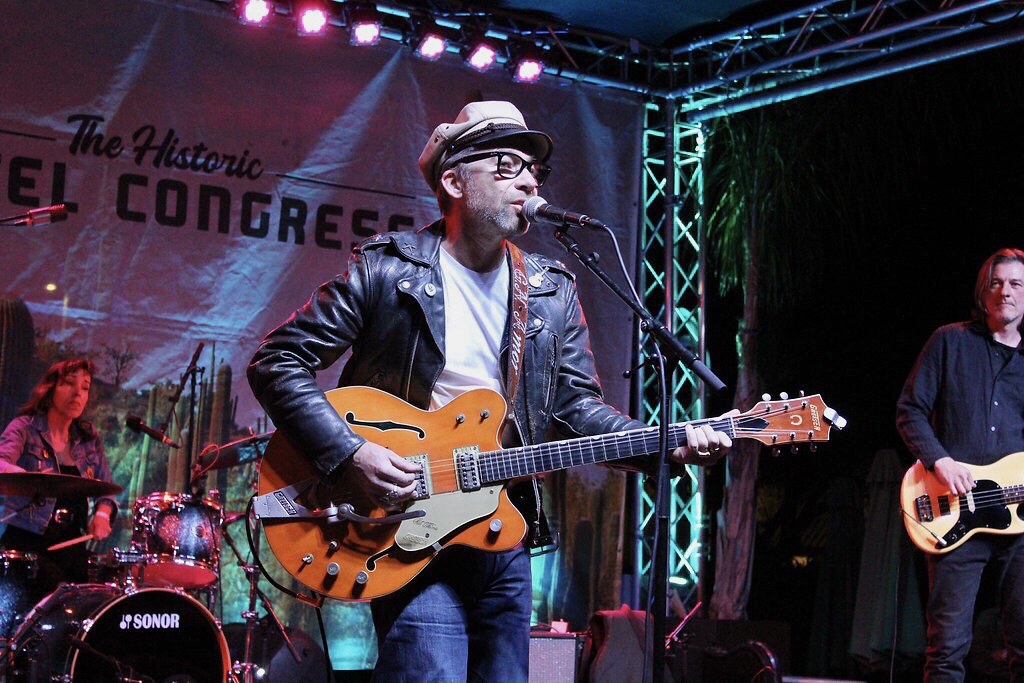
Chansons de Tucson: Naïm Amor
As you may have surmised by now, some of Tucson’s finest musicians moved here from various locales, but Gabriel Naïm Amor can rightfully claim to have come from further away than many. The son of a renowned painter who emigrated from Tunisia to France as a teenager, Amor lived in Paris before eventually finding his way, as so many do, to the Old Pueblo. Amor is a master of the guitar and has a suavely mellow voice, which he applies to many different styles of music, from swinging rock and roll (with his band, Amor Deluxe) to jazz to lounge to entire sets of popular songs from his native France, which he treats us to occasionally. He frequently performs with bassist Thøger Tetens Lund (a fellow European transplant, originally from Denmark), and a variety of percussionists and other musicians, depending on what he’s playing that evening. Often seen around town in his signature leather jacket, driving his vintage Karmann Ghia loaded up with his music gear, Amor is as stylish as he is talented, and he brings an international flair to the vivid tapestry that is Tucson’s culture.
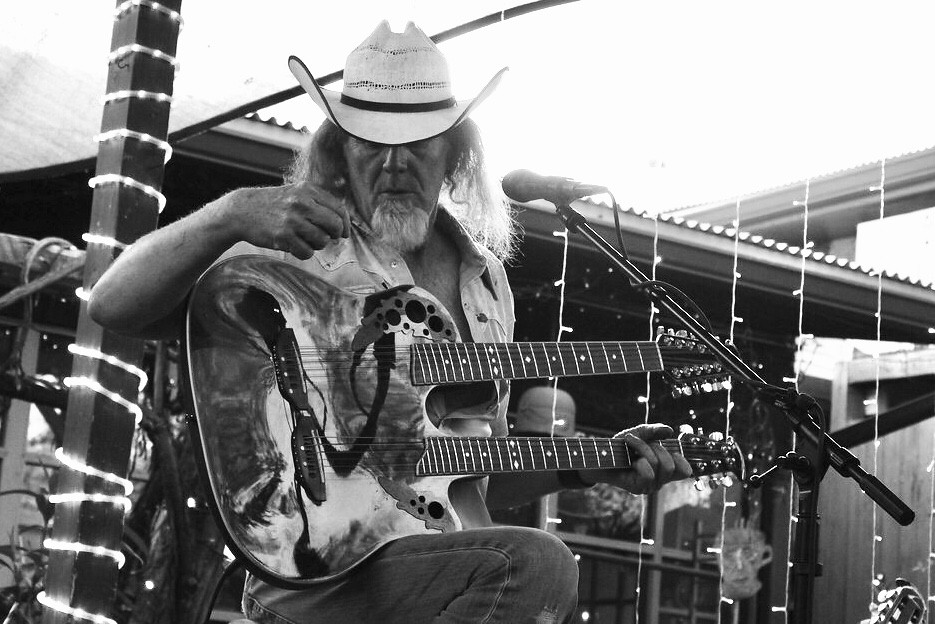
Honkytonk Country-blues: Hank Topless
It wouldn’t be the American Southwest without some good old country and western music, but it also wouldn’t be Tucson if someone didn’t put their own unique and unconventional spin on it. Enter Hank Topless (unsurprisingly, not his real name). Topless, a native Arizonan, is one of Tucson’s hardest-working musicians; in addition to performing somewhere around Arizona seemingly every week, he also brings other artists to town to promote and collaborate with. He’s been voted “Best Country Act” by a local paper several times, an award which he doesn’t necessarily agree with. Topless can be seen as a solo act, performing a more subdued, acoustic set of originals and (often obscure) classic country covers. However, it’s with his trio, Dedd Horsemen (formerly a quartet that went by the name Hank Topless and the Dead Horsemen), that he really makes a statement. Strapping on a Flying V, or better yet, his custom-made doubleneck guitar (dubbed the “Fuckernecker”), Topless and Dedd Horsemen bash out an electrified set of noisy, psychedelic tunes that, while they may have their basis in country, spiral out far beyond the boundaries of any one genre. Their stunning, almost metallic cover of Glen Campbell’s “Wichita Lineman” must be heard to be believed. One of Topless’ signature originals is “White Power Meth Heads,” an incisively satirical song that obviously lampoons the idiocy of the title characters but has nevertheless been misunderstood by folks who can’t look beyond the title. He’s not shy about discussing his past struggles, which include, as he puts it, “a big staycation in the Arizona Department of Corrections.” We’re lucky he now resides in a nicer place, here with us, where he can share his singular vision.
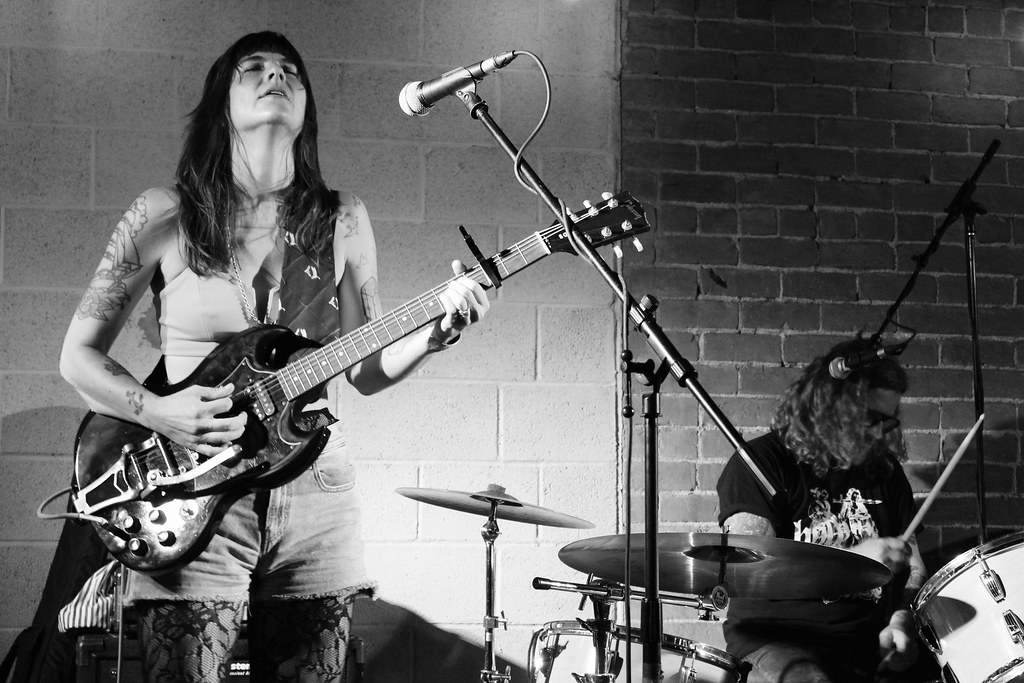
Successful Transplants: Birds and Arrows
They weren’t the first local band I saw after moving to Tucson in 2022 but suffice it to say that Birds and Arrows greatly impressed me upon my first exposure to them as an opening act for an L.A. band. According to my social media post at the time, “they’re fucking awesome and they deserve to be huge.” Nearly three years and at least a dozen shows later, my opinion still stands. The core of the band is the husband-and-wife team of Andrea Connolly on guitar and lead vocals and Pete Connolly on drums and backing vocals. Prior to migrating to Tucson, they made their home in North Carolina, where they performed as a duo and had more of a folk-tinged sound. They passed through Tucson almost exactly a decade ago while on tour, fell in love with the desert and made it their mission to live here, despite not knowing a soul locally. The city, its fellow artists and its surrounding landscapes gradually seeped into their music, leading them to transform their previous sound and become a full-on rock & roll band. While they still occasionally perform as a duo, they’re more often augmented by their third member, guitarist Ben Nisbet. Like Andrea and Pete, Nisbet is an incredibly talented musician and songwriter (he’s also a classically trained violinist who plays with the Tucson Symphony), and he adds immeasurably to their sound. The band’s secret weapon is undoubtedly Andrea’s incredibly powerful voice; at time, she reminds me of Linda Ronstadt in her younger days. Their music is the real thing, with songs full of catchy hooks, thoughtful lyrics and a hell of a lot of heart. Pete and Andrea are also visual artists, and they share studio space in the heart of Tucson’s vibrant downtown with a host of other creative people, which to me underscores how our local artists are not only supported by the community, but by each other.
Legacy: Al Foul and Hannah Levin
One name that comes up continually around Tucson is that of the legendary Al Foul. Another Tucson transplant (his roots were in Boston), Foul arrived here in the early 1990s and seamlessly assimilated into Tucson’s music community. Originally a punk musician, Foul transformed into a purveyor of a more roots-based rock and roll sound. He soon became a local fixture and was seemingly universally cherished by his fellow artists, who admired his integrity and authentic nature. Sadly, Foul was diagnosed with throat cancer, and after an agonizing battle with the illness, he passed away in May of 2022. It was before my time here, and I deeply regret never having had the chance to meet him or see him perform. Nevertheless, his legacy looms large over the city more than three years after his passing. Foul is survived by his widow, Hannah Levin, who is herself a fixture of Tucson’s music scene, thanks in part to her role as a DJ on the local independent radio station, KXCI. She wrote a brutally frank account of Foul’s final days for a local paper that is utterly heartbreaking and difficult to read but shined a necessary light on the dearth of end-of-life options for the terminally ill. Levin hosts the popular drive-time radio show, “The Home Stretch,” a wildly eclectic three hours that quite often features local artists. Levin has made it her mission to ensure that Foul is never forgotten; one avenue by which she is accomplishing this is the annual Foul Fest, which takes place every October at Che’s Lounge, a bar where Foul performed regularly. Foul Fest is an occasion that is often joyous and occasionally melancholy, during which a profusion of Foul’s friends and colleagues take the stage for short sets paying tribute to him. Foul may be gone, but he’ll always be a part of the fabric of the city.

New in Town: Miguel Melgoza
Virtually all the musicians I’ve written about in this piece have been bouncing around Tucson for at least a decade, if not their entire lives, but there’s one relative newcomer I wanted to highlight. His name is Miguel Melgoza; he’s called Miggy by his friends, which essentially means everyone, as you’re not likely to meet a more affable fellow. He’s a singer-songwriter who moved to Tucson from the San Francisco Bay Area about a year and a half ago, and in that time, he’s become a staple of the local scene. I’m not joking when I say that there are some weeks when it feels like he’s on more nights than he’s off. His versatility is impressive. He can often be seen fronting his own two- or three-person combo with a variety of local superstars such as Ben Nisbet, Brian Lopez or Ryan Alfred accompanying him, and it’s usually a toss-up as to whether he’ll be strumming an acoustic guitar or bashing a drum set during those gigs (he’s an incredibly talented percussionist). Either way, his soulful voice comes through loud and clear, particularly when it comes to his own compositions, which can range from introspective ballads to high-energy Latin songs sung in Spanish. Speaking of percussion, he also plays drums of one sort or another with a variety of other local bands, including Xixa, Laura Jean Band and Bolero Jonze. We even randomly stumbled upon one of his solo performances when we went to an early dinner at a suburban Italian restaurant; he was performing a fun set of classic cover tunes for an appreciative (and mostly elderly) crowd of diners. He’s the epitome of a working Tucson musician, and his ubiquity just underlines his broad appeal.
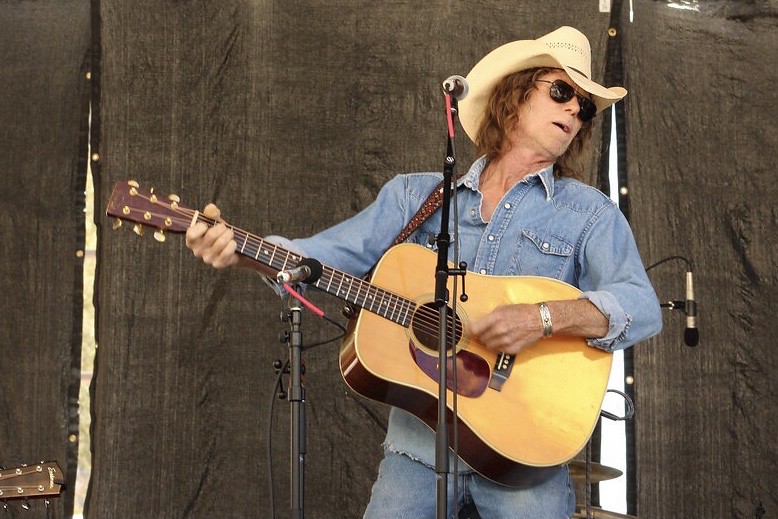
Country with a Bite: Mark Insley
If Hank Topless is the iconoclast of the Tucson country and western scene, Mark Insley is more of a traditionalist who nevertheless places his own stamp on the genre. Having found his way here from Kansas by way of Southern California, Insley has seen a lot during his lengthy music career. He often relates a story of how he was finishing up a set at a venue in California when he was asked if he could play a little longer for someone important who had just arrived. Insley’s response was that they should have gotten there on time. The important person later turned out to be Bruce Springsteen. His arrival in Tucson a few decades ago seems to have crystallized his sound into something unique that complements our surroundings. Insley almost always performs with his band, The Broken Angels, which includes New Orleans native Damon Barnaby on lead guitar (seriously, one of the best guitarists I’ve ever heard), Duane Hollis (from Greyhound Soul) on bass and Ernie Mendoza on drums. They play a set that’s mostly originals laced with a few choice covers of classic “outlaw” country artists, and while the music has the requisite twang associated with country, it also possesses a slightly harder edge at times, informed by the members’ love of all things rock and roll. There’s a segment toward the end of one of their originals, where Barnaby’s frenetic playing causes the song to swirl into something almost psychedelic in nature. A few weeks ago, I was leaving a metal show when I heard some familiar sounds wafting through the air from a few blocks away. It took me about three seconds to realize that it was Mark Insley and the Broken Angels, playing a late-night gig outdoors. It’s a testament to how great they are that, despite the late hour and the fact that I’ve probably seen them a dozen times already, I hurried over to get another dose.
There are so many wonderful musicians in Tucson, and I already feel guilty about wrapping this up without mentioning a whole bunch of others, but so it goes. Perhaps I’ll write a sequel someday. At any rate, as a music lover, I feel incredibly fortunate to live in a place with such a vital music scene. Exposure to the wide variety of what is available here has without a doubt broadened my musical horizons to an exceptional degree over the past three years. The rest of the world seems to agree regarding the quality of what this city offers, as several of the artists I’ve written about are well regarded in Europe and regularly tour The Continent. Whether it’s the awe-inspiring terrain, the profound sense of community or just something in the water (which, to be fair, is rather scarce around these parts), Tucson, Arizona has a way of sparking creativity in a vast array of talented musicians, and it is a privilege to be able to live here and experience it every day.
I referred to the following articles for some background research for this piece, and I encourage you to read them if you’d like to find out more about Tucson’s music scene:
https://www.tucsonsentinel.com/arts/report/042823_greyhound_soul/tucson-rockers-greyhound-soul-are-29-years-strong/
https://www.tucsonsentinel.com/arts/report/091823_arthur_vint/the-storied-life-tucson-drummer-arthur-vint/
https://news.azpm.org/s/22565-salvador-duran-i-sing-my-paintings-i-paint-my-music/
https://tucson.com/life-entertainment/local/music/article_c2e514b4-dd3b-11ec-9f23-d3041ea7a7a8.html
https://www.tucsonweekly.com/tucson/al-fouls-widow-reflects-on-his-life-and-legacy/Content?oid=33128841
https://tucson.com/entertainment/music/article_7f3a5cf5-fa80-5eb3-b753-2e0b8e63ef60.html








(Co-Editor (SDB) note)
Here is the rear cover of the Giant Sand LP ‘Love Songs’ as it inspired me to buy the same Harmony guitar seen on floor…
I also saw Giant Sand and Calexico with Pappy Allen play the Co-Op Hall Oxford sometime early 1990s)
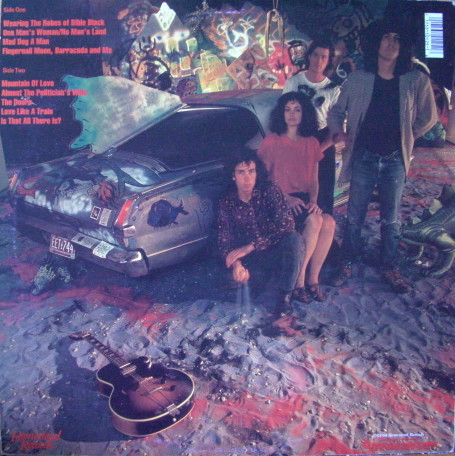
Mike Grover

Leave a Reply